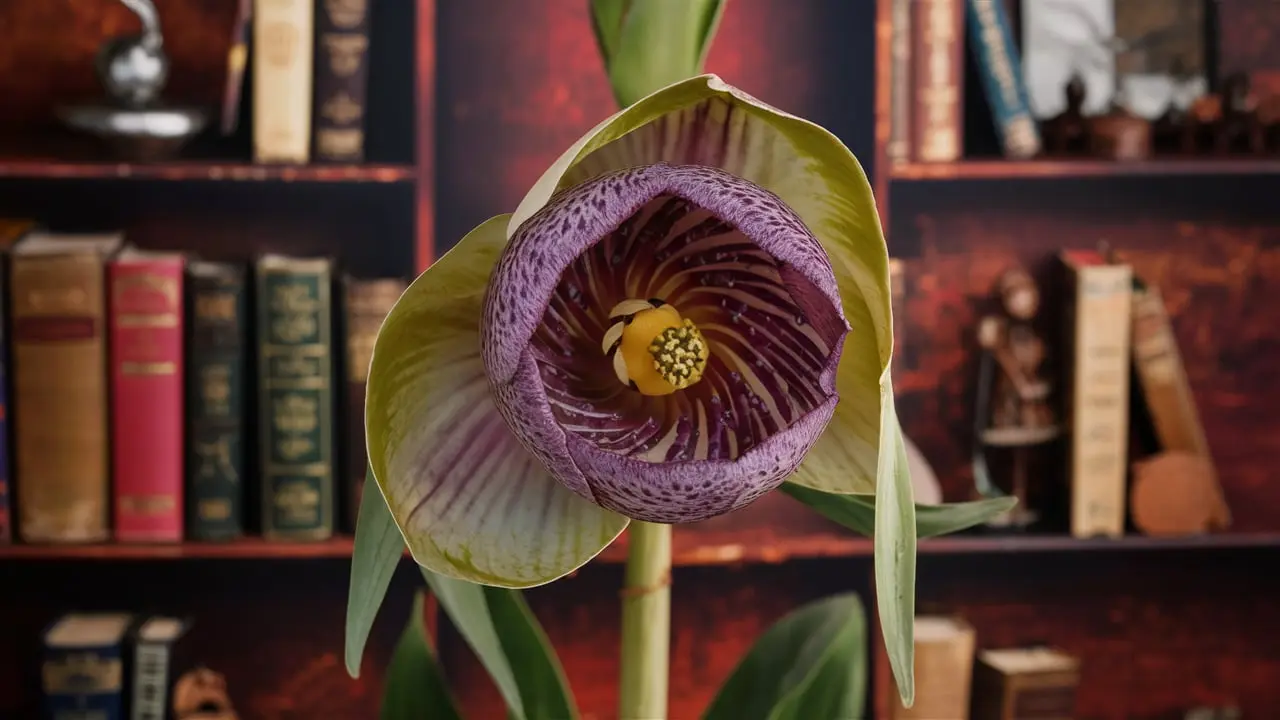New Zealand is home to a diverse array of unique flora, but few are as captivating as the Chimunga New Zealand flower.
This extraordinary bloom has a rich history intertwined with the culture, traditions, and natural beauty of the region.
The Origins of the Chimunga New Zealand Flower
The Chimunga New Zealand flower is native to the lush landscapes of New Zealand. Its origins can be traced back thousands of years, to a time when the islands were isolated from the rest of the world.
During this period, New Zealand’s flora and fauna evolved in unique ways, leading to the development of plants like the Chimunga.
A Unique Flora in Isolation
New Zealand’s geographical isolation played a crucial role in the evolution of its plant life. The Chimunga New Zealand flower, like many other native species, developed distinct characteristics that set it apart from flowers found elsewhere.
This isolation allowed the Chimunga to thrive without competition from invasive species, leading to its prominence in the local ecosystem.
The Evolutionary Journey
The Chimunga New Zealand flower’s evolutionary journey is a fascinating one. Over time, it adapted to the specific conditions of its environment, developing features that helped it survive and flourish.
These adaptations include its vibrant colors, which attract pollinators, and its robust structure, which allows it to withstand the region’s varying climate.
Significance of the Chimunga New Zealand Flower
Beyond its botanical importance, the Chimunga New Zealand flower holds deep cultural significance.
For the indigenous Māori people, this flower is more than just a plant; it is a symbol of life, growth, and connection to the land.
Māori Traditions and the Chimunga
In Māori culture, the Chimunga New Zealand flower is often associated with important life events and rituals. It is used in ceremonies to symbolize new beginnings, growth, and the continuity of life.
The flower’s presence in these rituals underscores its importance as a cultural icon.
The Chimunga in Art and Symbolism
It also appears in Māori art and symbolism. It is commonly depicted in traditional carvings, textiles, and jewelry, where it represents beauty, resilience, and the enduring connection between the Māori people and their land.
This flower’s depiction in art highlights its role as a symbol of cultural identity.
Modern Cultural Relevance
Today, the Chimunga New Zealand flower continues to hold cultural significance, not just for the Māori but for all New Zealanders.
It is often used in national celebrations and events as a symbol of the country’s natural beauty and cultural heritage.
The flower’s image is frequently seen in promotional materials, souvenirs, and even in the branding of local products, emphasizing its role as a national emblem.
Botanical Characteristics of the Chimunga New Zealand Flower
To truly appreciate the Chimunga New Zealand flower, it’s essential to understand its botanical characteristics. This flower is not only beautiful but also uniquely adapted to its environment.
Appearance and Structure
The Chimunga New Zealand flower is known for its striking appearance. It typically features vibrant petals that can range in color from deep reds and purples to bright yellows and oranges.
These vivid colors are not just for show; they play a crucial role in attracting pollinators.
The flower’s structure is also noteworthy. It has a sturdy stem that supports its large, showy blooms, and its leaves are often broad and lush, helping the plant capture sunlight for photosynthesis.
The Chimunga’s roots are deep and well-developed, anchoring the plant firmly in the often-windy environments of New Zealand.
Adaptations to the Environment
The Chimunga New Zealand flower has evolved several adaptations that allow it to thrive in its native habitat.
For example, its petals are thick and waxy, helping to retain moisture in the sometimes dry and windy conditions.
Additionally, the flower’s deep root system enables it to access water and nutrients from the soil, even in challenging environments.
The Chimunga’s ability to attract pollinators is another key adaptation. Its bright colors and sweet fragrance lure bees, butterflies, and birds, ensuring successful pollination and the continuation of the species.
Role of chimunga new zealand flower in Ecosystem
The Chimunga New Zealand flower plays a vital role in the local ecosystem. Its presence benefits not only other plants but also a wide range of animals and insects.
A Source of Nourishment
For many pollinators, the Chimunga New Zealand flower is a crucial source of nourishment. Bees and butterflies are particularly attracted to its nectar, which provides them with the energy they need to survive and reproduce.
In return, these pollinators help the Chimunga by spreading its pollen, ensuring the flower’s reproduction.
Supporting Biodiversity
The Chimunga New Zealand flower also supports biodiversity by providing habitat and food for various species. Its dense foliage offers shelter for small insects, while its seeds and nectar sustain a range of wildlife.
By supporting these species, the Chimunga contributes to the overall health and diversity of its ecosystem.
The Chimunga and Plant Communities
In addition to its direct role in supporting wildlife, the Chimunga New Zealands flower is also an important member of its plant community.
It often grows alongside other native plants, contributing to the stability and resilience of the ecosystem.
The presence of the Chimunga can help prevent soil erosion, promote healthy soil, and support the growth of other plant species.
Conservation Efforts for the Chimunga New Zealand Flower
Despite its importance, the Chimunga New Zealand flower faces several threats. Habitat loss, climate change, and the introduction of invasive species have all taken a toll on this iconic plant.
Fortunately, there are ongoing conservation efforts aimed at protecting the Chimunga and ensuring its survival for future generations.
Threats to the Chimunga
One of the primary threats to the Chimunga New Zealand flower is habitat loss. As land is cleared for agriculture, development, and other human activities, the natural habitats of the Chimunga are shrinking.
This loss of habitat reduces the flower’s chances of survival and threatens the delicate balance of the ecosystems it supports.
Climate change is another significant threat. As temperatures rise and weather patterns shift, the Chimunga may struggle to adapt to new conditions.
Changes in rainfall, temperature, and the frequency of extreme weather events can all impact the flower’s ability to thrive.
Invasive species pose yet another challenge. Non-native plants and animals can outcompete the Chimunga for resources, spread diseases, or introduce pests that the Chimunga is not equipped to handle.
These threats underscore the need for ongoing conservation efforts.
Conservation Strategies
Conservationists are working hard to protect the Chimunga New Zealand flower through a variety of strategies. One approach is habitat preservation.
By protecting and restoring the natural habitats where the Chimunga grows, conservationists can help ensure that the flower has the space and resources it needs to thrive.
Another strategy is the cultivation of the Chimunga in botanical gardens and nurseries.
By growing the flower in controlled environments, conservationists can preserve its genetic diversity and create a reserve population that can be reintroduced into the wild if necessary.
Public education and awareness campaigns also play a crucial role in conservation efforts. By raising awareness of the Chimunga New Zealand flower’s importance and the threats it faces, these campaigns encourage people to take action to protect this iconic plant.
The Role of Indigenous Knowledge
Indigenous knowledge is also vital in the conservation of the Chimunga New Zealand flower. The Māori people have a deep understanding of the land and its plants, including the Chimunga.
By incorporating this traditional knowledge into conservation efforts, we can develop more effective strategies for protecting the flower and its ecosystem.
The Chimunga New Zealand Flower in Modern Horticulture
The Chimunga New Zealand flower is not just a symbol of natural and cultural heritage; it is also becoming increasingly popular in modern horticulture.
Gardeners and landscapers are drawn to the Chimunga for its beauty, resilience, and ability to thrive in a variety of conditions.
Growing the Chimunga in Your Garden
For those interested in cultivating the Chimunga New Zealand flower, there are a few key considerations to keep in mind.
The flower prefers well-drained soil and plenty of sunlight, though it can tolerate partial shade. Regular watering is essential, especially during dry periods, but be careful not to overwater, as the Chimunga’s roots can be sensitive to excessive moisture.
When planting the Chimunga, it’s important to space the plants properly to allow for air circulation and prevent the spread of disease.
Mulching around the base of the plants can help retain moisture and regulate soil temperature, promoting healthy growth.
Landscaping with the Chimunga
The Chimunga New Zealand flower is a versatile plant that can be used in a variety of landscaping applications.
Its vibrant colors and lush foliage make it an excellent choice for borders, flower beds, and garden focal points.
The Chimunga’s ability to attract pollinators also makes it a valuable addition to wildlife gardens, where it can help support local ecosystems.
For a more dramatic effect, consider planting the Chimunga in mass groupings. This approach creates a bold visual statement and allows the flower’s colors to shine.
The Chimunga can also be combined with other native plants to create a diverse and sustainable garden that reflects the beauty of New Zealand’s natural landscapes.
The Chimunga in Floral Arrangements
In addition to its role in gardens and landscapes, the Chimunga New Zealand flower is also popular in floral arrangements. Its striking colors and long-lasting blooms make it a favorite among florists.
Whether used as a focal point or as part of a mixed bouquet, the Chimunga adds a touch of natural elegance to any arrangement.
The Future of the Chimunga New Zealand Flower
As we look to the future, the Chimunga New Zealand flower faces both challenges and opportunities.
While threats like habitat loss and climate change are serious concerns, ongoing conservation efforts and increased public awareness offer hope for the future.

